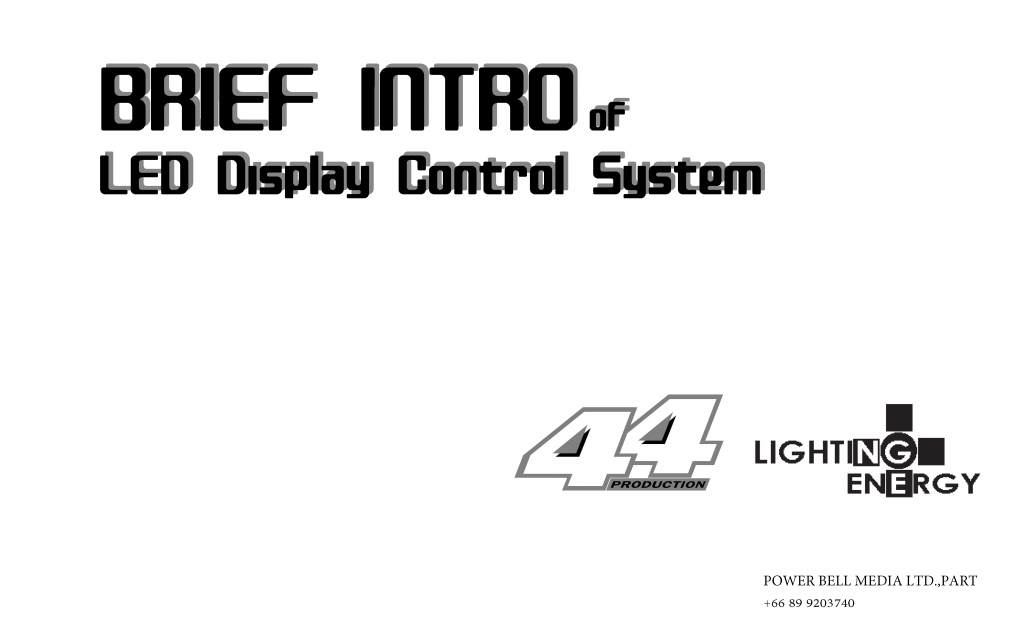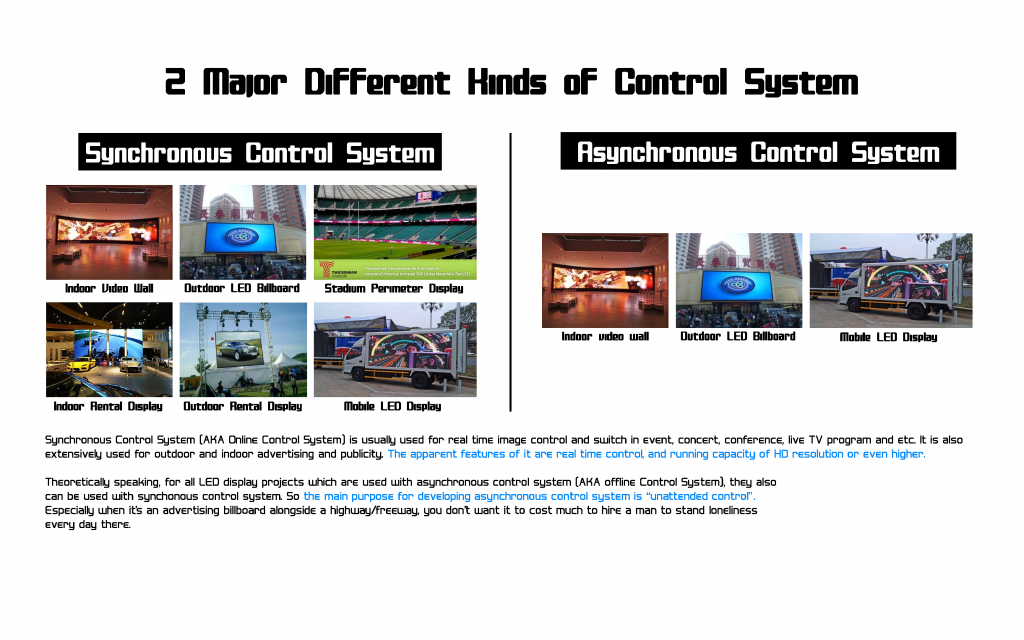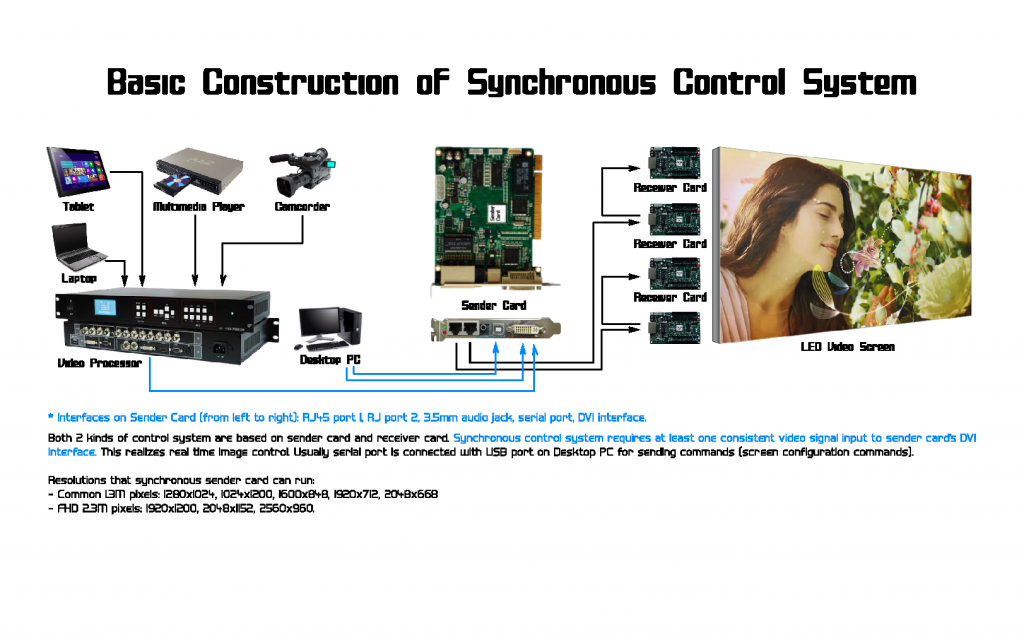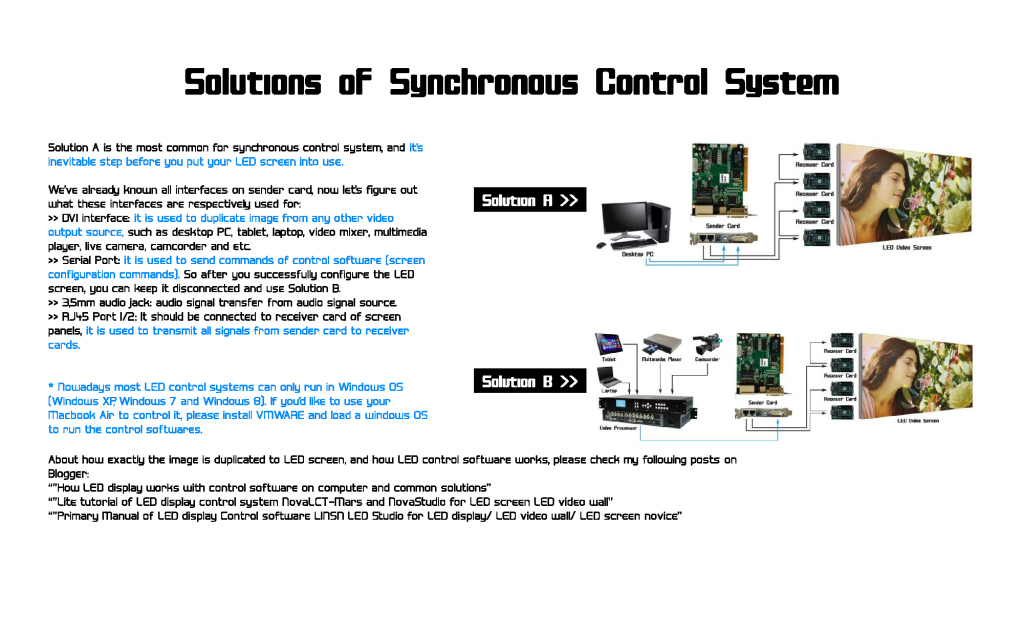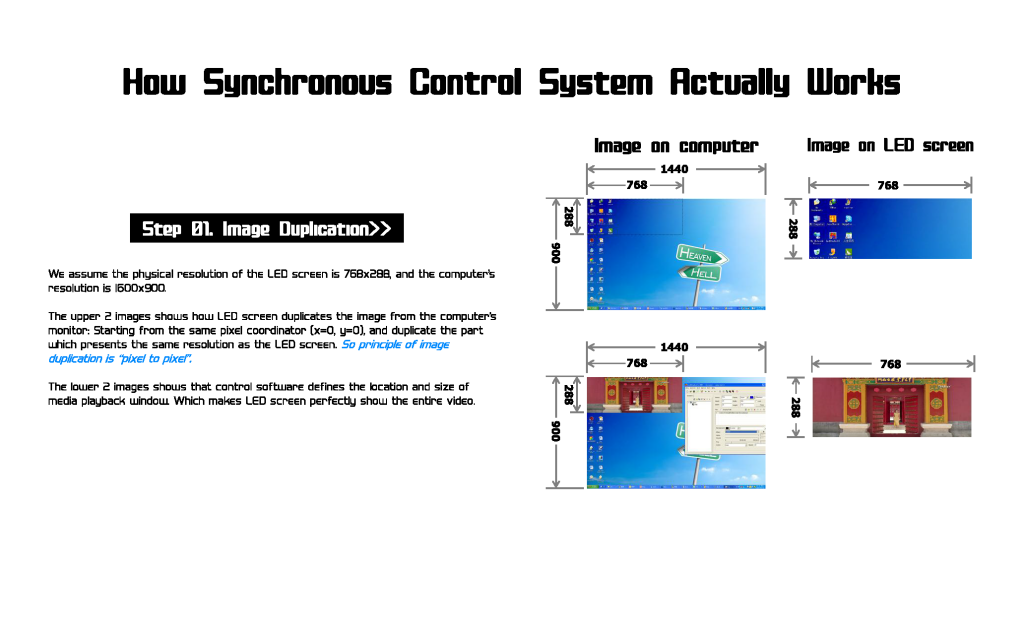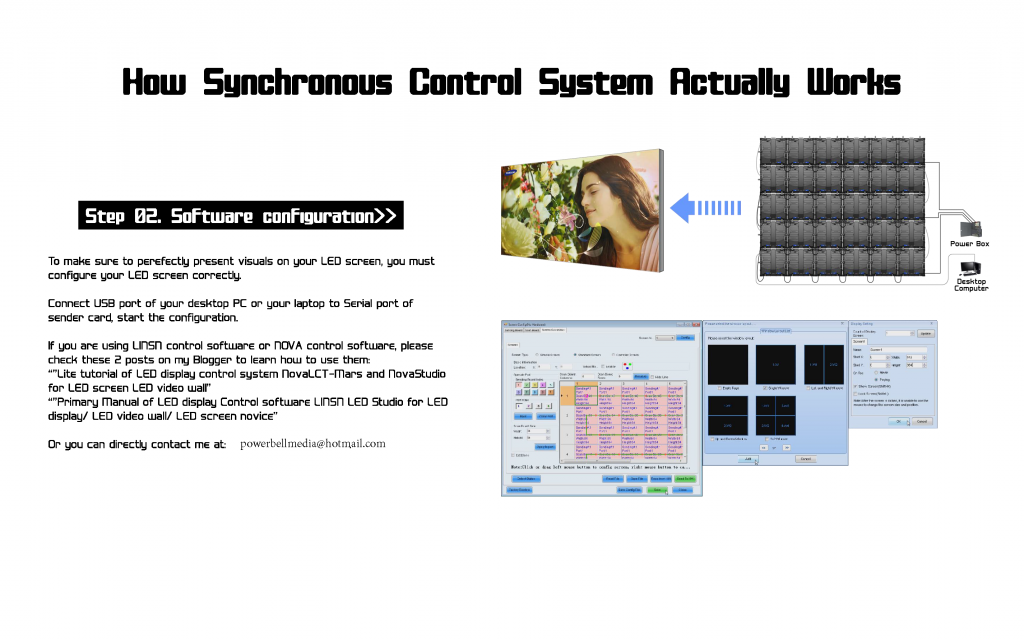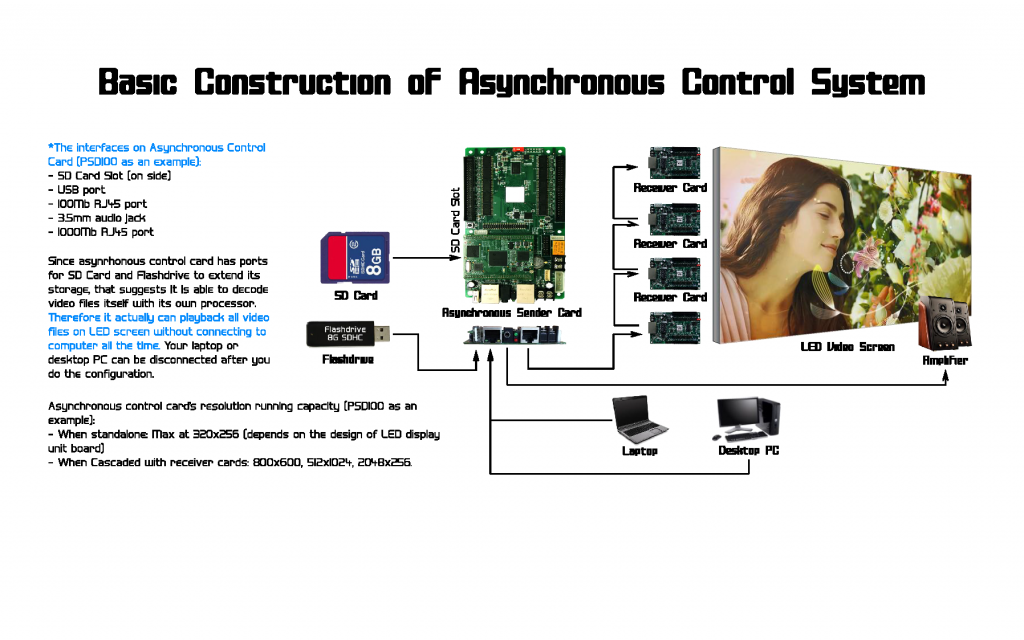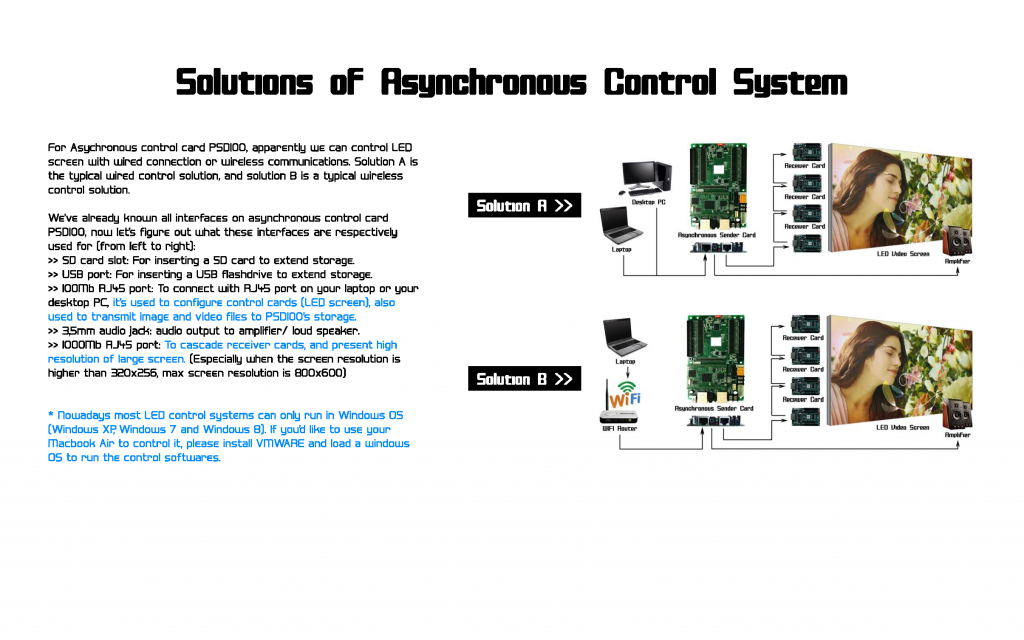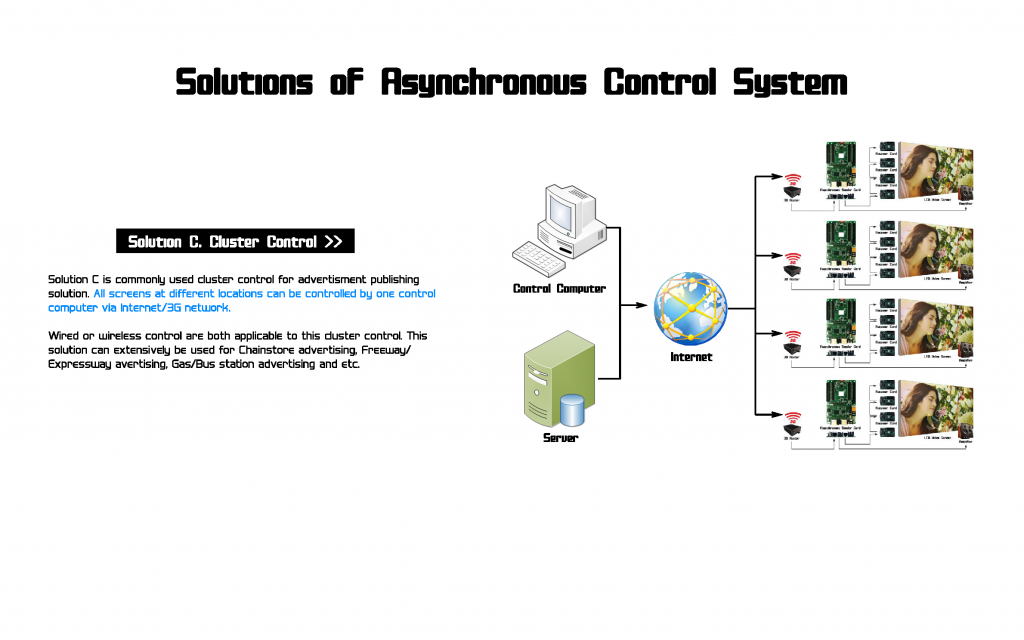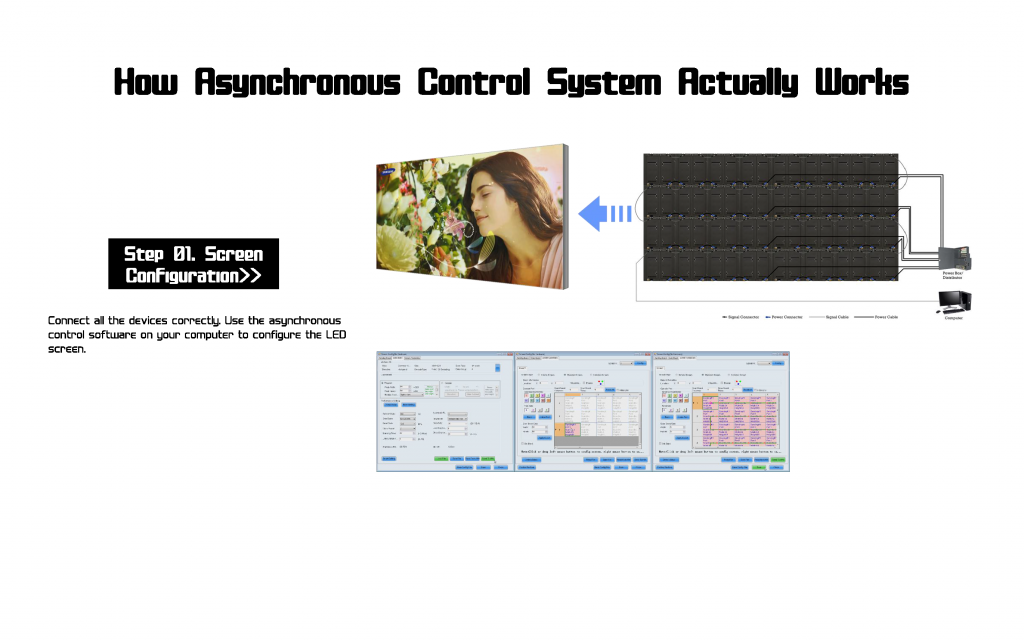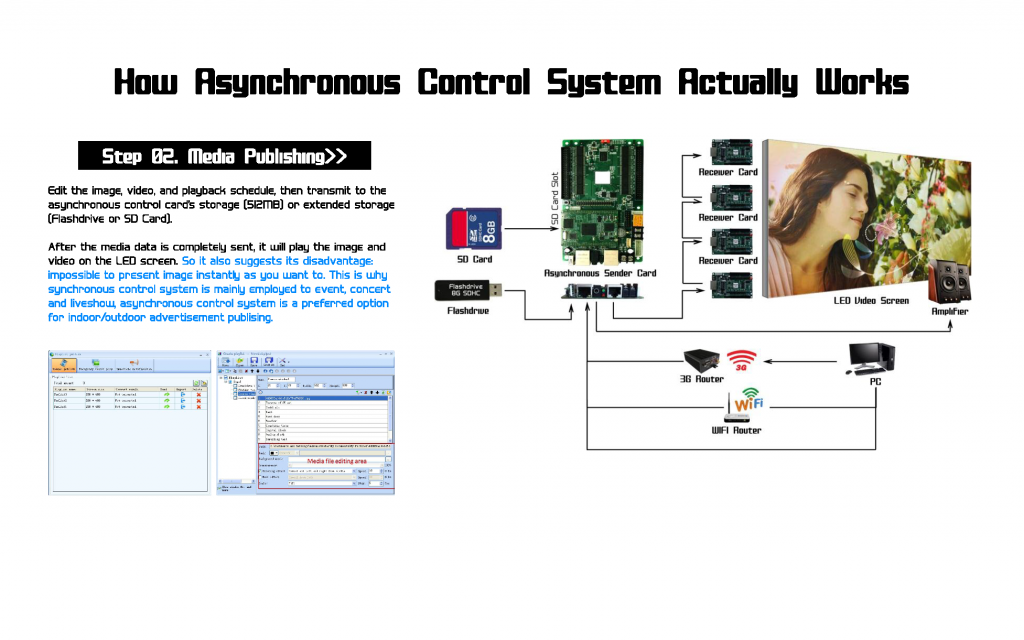What are LED screens
An LED Screen, or LED wall, is often compared to a giant television or computer monitor. However, the screen itself is composed differently and is actually made of multiple light emitting diodes placed close together, to form an overall display panel. Each of these LEDs emits three colours – red, green and blue – and when combined, can display most colours in the spectrum.
LED technology should not be confused with LCD (liquid crystal display) technology, which is often used in television or computer monitors. Often, brands will advertise their screens as LED TV screens or LED monitors, but they are merely LCD screens with LED backlights to replace an alternative light source.
LED screens are a completely different technology to LCD screens. While LCDs are designed with indoor usage in mind and are created to smaller scales, LEDs are designed for much larger settings – often used in places like conference venues or shopping centres. Due to the high brightness output of LEDs, they are also much more capable at delivering images in bright outdoors spaces, unlike LCD technology.
LED screens can be used for a number of applications including the following:
Event spaces
High resolution indoor LED screens are a popular display choice for indoor event spaces such as exhibition centres, conferences, innovative marketing installations and corporate events.
Corporate & educational settings
LED screens can be used as a great medium for delivering highly engaging and informative content. This could be images, video, text or graphical information representing data. Delivering this content to scale in extremely high quality is an ideal way to increase overall engagement from your audience, ensure workplace collaboration and reinforce specific messages in both corporate and educational settings.
Digital signage & retail
Digital signage has seen massive growth recently. All over the world, LED screens are used to display a range of different promotional and commercial content, to deliver high impact to viewers in places like shopping centres, commuter networks and company office spaces.
The benefits of LED technology
High-resolution LED screens deliver messages with extremely high impact. We’ve outlined the major advantages below.
Better tech for lower prices
LED screens typically deliver better value and lower costs compared to other display types when you’re talking scale. When looking for display options for large spaces, they are often the best choice, due to their overall resolution quality and pixels per inch, which come at reasonable prices for the quality you are getting.
Brightness & flexibility of application
LED screens do not get washed out by bright ambient light. As such, they are suitable for use in a number of very bright environments such as outdoor parks or shopping spaces, or indoors, where excess light filters through from windows or doors.
Experiential spaces for commercial uses
There’s almost no limit when it comes to LEDs and screen sizes. If you can afford it, then you can max out your screen size as big as your space will allow, without ever compromising on the image quality. This does come with the need to produce custom content however, so it’s important to be mindful of this.
The lack of restriction on size and aspect ratio is largely due to the fact that LED screens are modular. This means they are made up of many individual panels and modules which can be connected to create the exact screen dimension you need.
